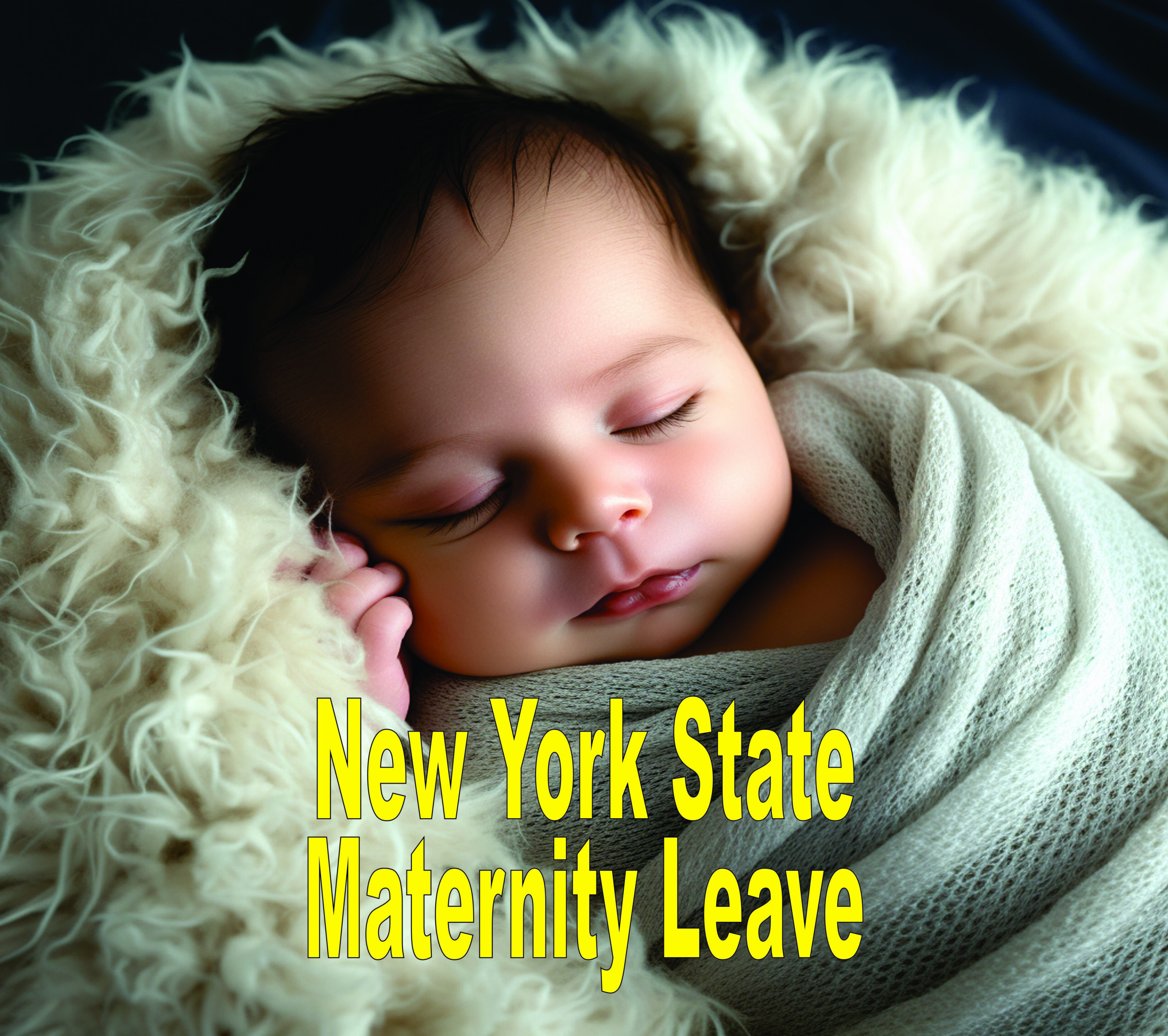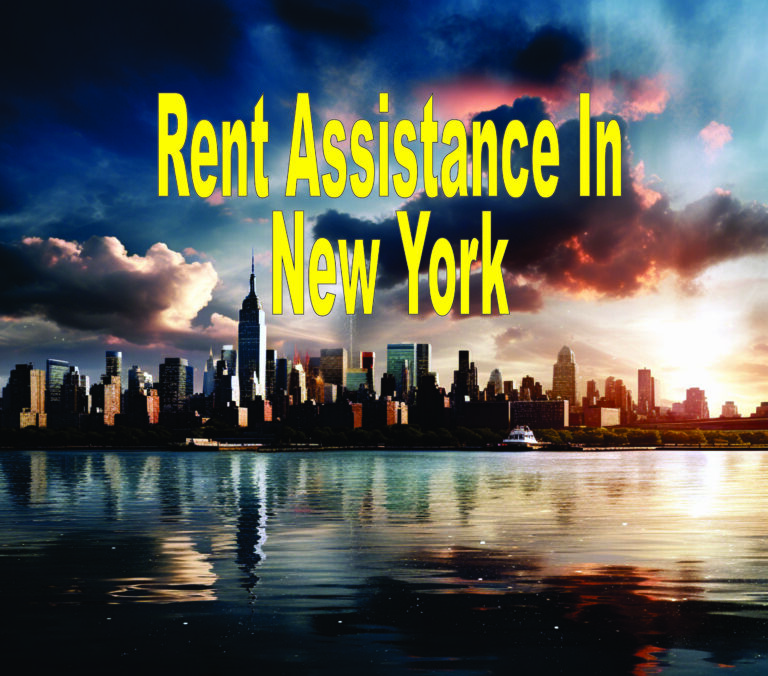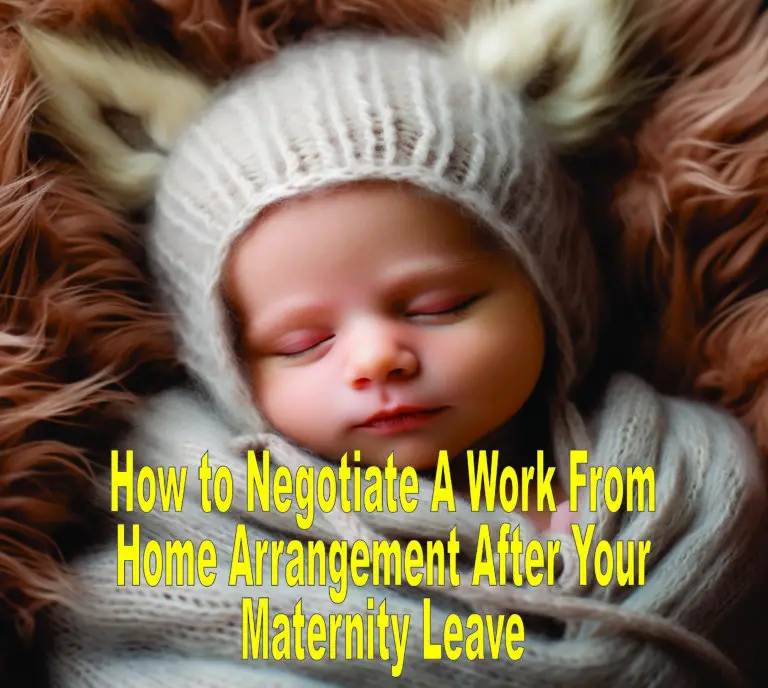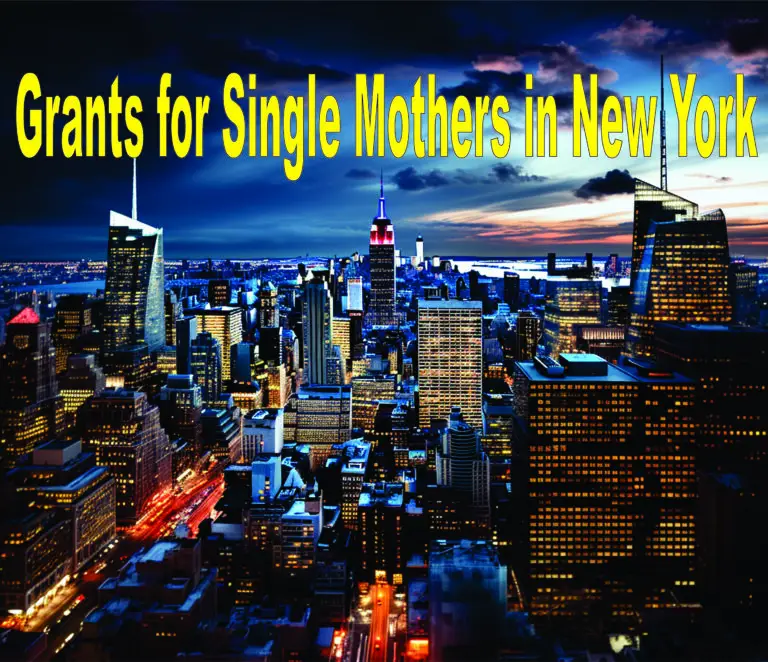New York State Maternity Leave

Last Updated on May 23, 2024 by Kathy
If you’re a new mother in New York State, you can have some of your wages or salary “replaced” by the New York Paid Family Leave Program (NYPFL). You don’t have to use the benefits just for having a baby, you can use it to provide care for sick relatives or to support your family members when they are deployed overseas. You may be eligible for NYPFL starting in 2020 if you or your minor dependent are subject to a mandatory or precautionary order or isolation due to COVID-19.
New York State Paid Family Leave
How many weeks of paid maternity leave can I get?

It depends on your employer if you have paid maternity leave as part of their benefits. However, you’re still eligible if your employer doesn’t offer paid maternity leave. The law was fully phased into effect on January 1, 2021. Most new parents working for private employers will now be eligible for 12 weeks of partially-paid bonding leave.
The New York State Paid Family Leave program functions as an insurance policy benefit, akin to New York’s short-term disability benefits. Based on my experience and additional research, employees experiencing qualifying events like childbirth or adoption can conveniently apply for leave through their designated NYPFL insurance carrier. Once approved, eligible individuals can access the benefits offered by the insurance carrier to support their family leave needs.
Based on my own experience navigating the New York State Paid Family Leave program, I discovered that while some employers may offer paid leave, they might not be fully aligned with the benefits of NYPFL. It’s crucial to engage in open communication with your employer to understand the interplay between their leave policy and NYPFL. In my case, discussing this matter with my employer ensured I could make the most informed decision about my family leave options.
How much will I be paid?
This question is dependent on your workplace and the details of your employer’s policy. Congratulations if your employer offers a maternity-pay package that is more generous than NYPFL, you may also take NYPFL concurrently with your employer’s offer. However, your employer might pay you directly rather than the NYPFL insurance company. If this is the case, you should be aware that state law provides other benefits, such as job protection rights and wage-replacement pay.
Being eligible for NYPFL brings valuable financial support. Irrespective of your employer’s paid leave policy, if qualified, you can still receive income while on leave. Since 2021, the wage benefit has been set at 67% of your salary, providing essential financial assistance during your family bonding period.
This amount is limited to 67% of the state’s average weekly wages (SAWW), currently $1,450.17. Maximum payouts for this year’s leave are $971.61 per week. Every year, the SAWW is established. The amount you receive, if you earn less than that of the SAWW, will be calculated based on your salary.
When can my leave start? When I’m still pregnant?
You can’t take the benefit while you are pregnant, even if you need to leave due to medical reasons besides the birth of your child. NYPFL benefits only kick in once your child is born. NYPFL may cover you if you want to take a leave for a child placed with you in foster care or adopted.
You have options if you are thinking about taking maternity leave later in life, but not right after the birth of your child. You can take paid leave to bond with your child anytime during the first twelve months after their birth, adoption, or foster placement.
Do I need to take my leave all at once?
No, you and your partner may decide to split the time; you might take four weeks and your partner four weeks. Then you will switch sides. NYPFL gives you the freedom to choose when and how you want to bond.
Can I use only part of the benefit or is it all or nothing?
You can get a portion of the benefit if you need to return to work sooner than the full leave ends. Note that even if your leave is exhausted, you can still apply for the rest of your time if it falls within the first 12 months of your child’s life, your placement with you as a foster or adoption parent, or any other qualifying events under the law, such as a family member who is very ill or close to you. You can also take this leave in one-day increments.
Drawing from my own experience and additional research, I can confirm that NYPFL operates as an insurance product, akin to New York State Disability Insurance, designed to support employees during family leaves. As someone who has navigated the process, I recommend communicating openly with your employer and the PFL insurance carrier. If you need to make changes to your initially requested leave duration, it’s crucial to promptly notify both your employer and the insurance carrier. From my experience, providing your employer with at least 30 days’ notice, if possible, ensures a smoother transition. However, I found that giving as much notice as possible can help address any unexpected situations effectively.
Can my spouse or partner get parental leave too?

The New York State Paid Family Leave program and its application to different family structures, I can confirm that both men and women, irrespective of their sexual orientation, are eligible for parental leave. Drawing from my personal experience, many families, including ours, opt for a staggered leave approach, where one parent takes leave first, and the other follows after the initial parent returns to work. This arrangement works seamlessly, especially for parents employed by the same company unless there are specific employer restrictions. My partner and I found this approach invaluable in balancing our family responsibilities.
What if I adopt, foster, or use a surrogate?
As someone who has personally utilized the New York State Paid Family Leave program for various family situations, I can confirm that NYPFL accommodates diverse family structures. Whether you are expanding your family through adoption, surrogacy, foster parenting, or pregnancy, you can access the benefits offered by NYPFL. To qualify, all you need is to provide the relevant documentation, such as a birth certificate or adoption papers, which ensures a smooth and straightforward application process.
Does it cover anything besides welcoming a new child—like caring for a sick relative or if I fall ill myself?
Yes, and no. Yes and no. The law applies to bonding with a newborn child. However, it is also available for caring for someone close to you with a serious illness. Parents, children, spouses, and domestic partners as well as grandparents and grandchildren are all considered close family members. NYPFL can be used to cover certain situations, such as when family members are required to serve in active military service overseas.
NYPFL does not cover your own medical conditions. However, it is a benefit that you can use to care for family members. However, most employees are covered by NYPFL. If you have NY statutory short-term disability, you will also be covered for wage-replacement benefits for short-term disabilities. In most cases, you will have New York Disability Leave available to you for your personal illness.
You may be eligible for NYPFL or disability benefits depending on your employer’s size. This is if you, or your dependent child, are placed under a mandatory, precautionary, or exclusion order due to COVID-19. You can find details about which benefits you may be eligible to receive in those instances through the Paid Family Leave in New York website.
Can I combine this with FMLA or any short-term disability benefits I may be entitled to?
FMLA: Your employer may require that these benefits run concurrently if they are subject to the federal Family and Medical Leave Act. If you are eligible for 12 weeks of NYPFL leave and take 12 weeks of FMLA leave, then the FMLA would be concurrently applied to NYPFL.
Short-term Disability: You may be eligible for both NYPFL and short-term disability, but not simultaneously (except in the case where you are quarantined due to COVID-19). If a mother is eligible for short-term disabilities after giving birth, she may be eligible to take NYPFL first. In a 52-week time period, you cannot take more than 26 weeks of short-term disability combined with NYPFL.
NYPFL is not available to workers’ compensation if you are receiving workers’ compensation due to a total disability. You might still be eligible if your earnings are reduced and you collect workers’ compensation.
If my company pays for some portion of leave, can I combine the amount I’m paid from my company and from my NYPFL insurance carrier?
While you are on NYPFL, you cannot receive more than 100% of your wages. The specifics of the policy of your employer will determine how NYPFL and your leave policy interact. NYPFL is a benefit that you have the right to if you are eligible. You have the option to request more from your employer, but it is not mandatory.
Is the leave pay taxed?
Yes, NYPFL benefits can be taxable. They must be included in federal gross Income. The premiums are taken from the after-tax wages of employees. This means you are paying upfront and through taxes for it. While insurance companies won’t automatically withhold taxes on benefits, employees have the option to request voluntary tax withholding.
What do I have to do to get the money and by when? How am I paid?
Having personally gone through the process, I understand the importance of timely paperwork submission for the New York State Paid Family Leave program. Once you complete the required forms, ensure they reach your NYPFL insurance company within 30 days of commencing your leave to secure your benefits. As I found out, the insurance carrier promptly processes claims, ensuring that you receive the support you need without unnecessary delays. From my experience, claims are typically approved or denied within 18 days of receiving your application, making the process efficient and reliable.
Are there any caps on how often I can use the leave, annually or in my lifetime?
The New York State Paid Family Leave program truly cares for individuals facing various family-related needs. There is no limit on the number of NYPFL trips you can take, and you are free to receive the full benefit once every 52 weeks. This flexibility allows you to make informed decisions for your family’s well-being without unnecessary constraints.
Do I still receive my health benefits while I’m out on leave?
Yes, If you contribute to your current health insurance, your employer will continue to pay your contribution even if you are on leave.
How is this paid for?
This program is funded by small payroll contributions from employees. These contributions are used to pay your employer’s NYPFL premium. The deduction is not optional. You will have to pay as long as your employer covers you. It works in the same way as health insurance. Even though you don’t need it, it is there for you when you’re ready to start a family or care for someone you love.
How much exactly will be deducted from each paycheck?
Understanding the payroll contribution for the New York State Paid Family Leave program is crucial for effective financial planning. In my experience, the 2021 payroll contribution is calculated at 0.511% of your weekly wage, subject to an annual maximum of $355.34. If your actual weekly wages are less than the New York State Average weekly wage, currently $1450.17/week, an adjusted annual contribution will apply. For example, if you earn $27,000 per year, equivalent to $519/week, you would contribute $2.65 per week towards NYPFL. To gain more insight and calculate your specific contribution, I recommend utilizing the handy calculator provided by NYPFL.
Do all companies have to provide leave or are some exempt? Can employees opt out?
Private employers in New York must have NYPFL coverage.
In my personal experience with the New York State Paid Family Leave program, I’ve come to understand that while the law primarily applies to private employers, public employers have the option to participate as well. If you work for the state, city, or federal government, it’s worth checking with your employer to see if they have opted into the NYPFL program. As I found out, being a member of a union and employed by a public company can still make you eligible for NYPFL benefits. To ensure your eligibility, consider reaching out to your union representative, who can provide valuable insights on your qualification status.
NYPFL coverage cannot be waived by employees if they comply with the following requirements:
- They work more than 20 hours per work week, but they will not be employed for 26 consecutive weeks (seasonal workers)
- They work less than 20 hours per work week, and they will not work for at most 175 days over a 52-week period.
Part-time employees, who work only one or two days per week, are not eligible. They may request a waiver in this case. You will lose eligibility for NYPFL benefits if you have waived coverage. Your employer can’t deduct payroll contributions from your paycheck.
Where do I go if I have more questions?
I highly recommend reaching out to your company’s Human Resources department as the first step. My experience showed that they can provide valuable insights and specific guidance tailored to your workplace. Additionally, if you prefer to gather information discreetly, referring to the employee handbook can be helpful in understanding your options. Furthermore, New York State’s website serves as a comprehensive resource for most questions related to NYPFL. For any additional queries, I found the NYPFL hotline at (844) 337-6303 to be a reliable and responsive source of further information.






